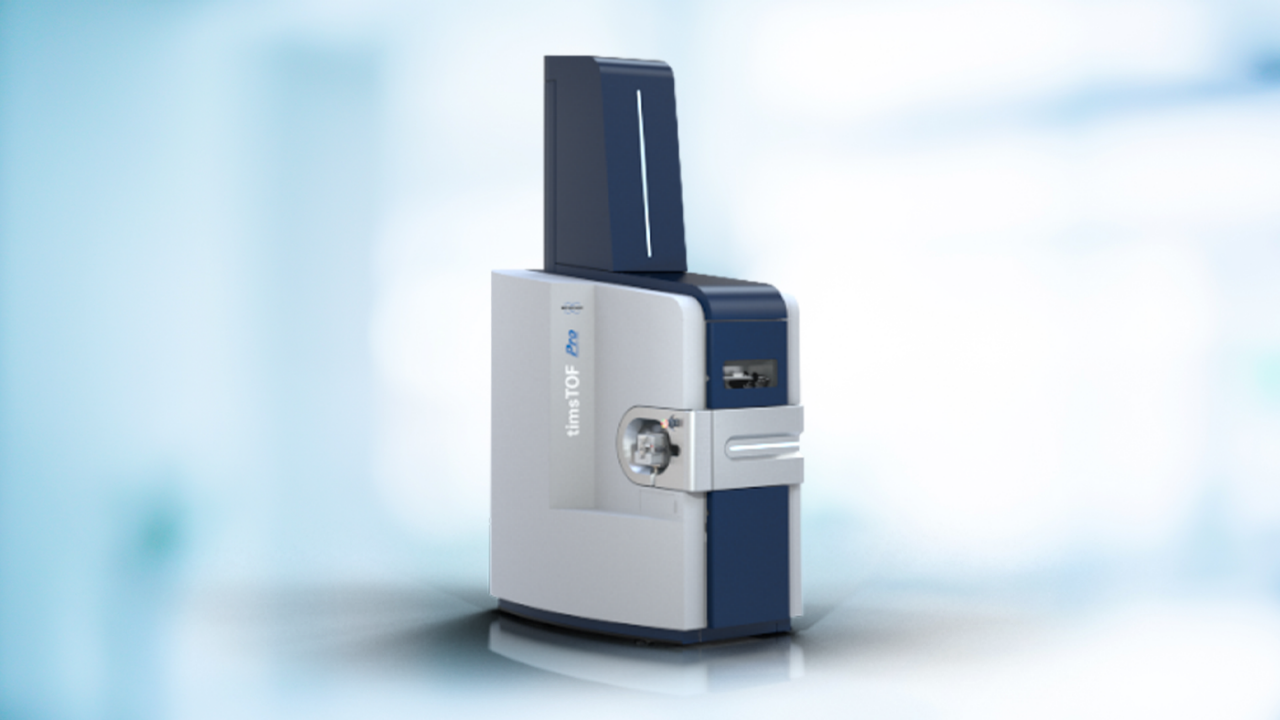Lead Optimization
概要
Once leads have been identified successfully, lead optimization starts to bring potent and safe drug candidates into the preclinical phase. Relevant aspects like affinity, selectivity, mode of action, synthesizability and ADMET-properties are typically improved in a multiple design-make-test-analyze (DMTA)-cycles. Bruker’s solutions provide fast, high-quality responses to ensure a high iterative pace in the DMTA-cycles required for the shortest possible time-to-market.
A crucial element for any lead optimization project is the development of easily synthesizable compounds and analogs thereof. Novel synthetic technologies like microbatch synthesis allow to easily cover a broad chemical space by combinatorial synthesis but create the demand for the fast analysis of millions of compounds at volumes of a few nl only. Bruker’srapifleX MPP这需要在家庭和屏幕完美的地址st pace to ensure rapid reaction control and surveillance of the chemical reactivity landscape. More detailed chemical information regarding structure, isomerization and reaction control based on larger volumes can easily be assessed byNMR,X-ray diffraction(XRD), and with thetimsTOF Pro MS.Single-crystal X-ray diffraction(SC-XRD) (Link5) delivers a detailed picture of the 3D connectivity and arrangement of the atoms in the organic molecule.
A key element in lead optimization is to establish a structure-activity relationship in order to develop more potent ligands.X-ray methods, such assmall angle X-ray scattering(SAXS) andsingle-crystal X-ray diffractiondeliver information on the structure of the protein-ligand complex, thus providing insights into spatial orientation of the ligand which is essential to rationally design more selective or potent ligands. Perfectly complementary for smaller proteins,NMRgives structural information about binding and dynamics in physiological conditions.
Modern lead optimization requires details on temporal stability of a protein-analyte complex as early as possible. This information can be derived from the kinetic constants, like dissociation rate constants.Surface Plasmon Resonance(SPR) is highly suited at this stage as the real-time, label-free analysis of the kinetics offers direct insights beyond affinities or IC50. Moreover, the high flexibility of SPR Bruker systems allows to simultaneously investigate the binding of lead structures to up to 31 target proteins offering insights into specificity and selectivity.
Additionally, SPR allows to investigate the enthalpic and entropic contribution, key characteristics in lead optimization processes. The influence of co-factors and medium conditions such as tissue-specific pH on a protein-ligand interaction can further be analyzed by SPR.
Bruker’s mass spectrometry portfolio offers an additional layer of insight relevant during lead optimization. ThetimsTOF Promakes use of the Parallel Accumulation Serial Fragmentation (PASEF) acquisition method, thus offering highly reliable, sensitive and fast insights into proteomics for in vitro mode of action studies. Furthermore, native MS-conditions allow to investigate protein-ligand complexes in orthogonal fashion, additionally providing information on stoichiometry besides affinities, selectivity and binding modes.
Eventually, lead optimization is also driven by improvements ofADMET-properties. Bruker’s SC-XRD, NMR, SPR and MS solutions are perfectly suited for the investigation all the way from binding assessment with plasma proteins (e.g. for increase of half-life) and metabolite analysis to distribution and toxicology studies. Most recently, ourMALDI-imagininghas turned out to be especially powerful studying the toxicology profile of compounds. Bruker’smagnetic resonance MS systemsdeliver a market-leading resolution of > 290’000 mass resolutions at m/z 400, thus enabling a comprehensive mapping of a compound.
有趣的铅化合物properti进行了优化es are likely to be tested in in vivo studies using both transgenic and disease models at the later stages of lead optimization. Conventionally, small rodents are used and often require ‘snap shot’ investigations where single time point experiments are carried out on excised tissue. However, Bruker’spreclinical imaging systemssuch as theBioSpec MRIandSkyscan micro CTcan provide precise events during the disease that may be pertinent to the particular efficacy of the molecule. Bruker’s preclinical platform provides the ability to measure quantitatively and precisely anatomical, functional, metabolic and cellular mechanisms. The high data quality is ensured by longitudinal experiments where live results can influence the decision making much earlier compared to ex vivo tissue assessments. In addition, temporal in vivo biomarkers assessment within animal not only reduces total numbers of animals used but provides information on mechanisms in the intact fully functioning organ/tissue.
関連製品
ウェビナー
Webinars
サポート
Labscape
Service & Life Cycle Support for Magnetic Resonance and Preclinical Imaging
Bruker’s commitment to provide customers with unparalleled help throughout the buying cycle, from initial inquiry to evaluation, installation, and the lifetime of the instrument is now characterized by the LabScape service concept.
LabScape Maintenance Agreements, On-Site On-Demand and Enhance Your Lab are designed to offer a new approach to maintenance and service for the modern laboratory










